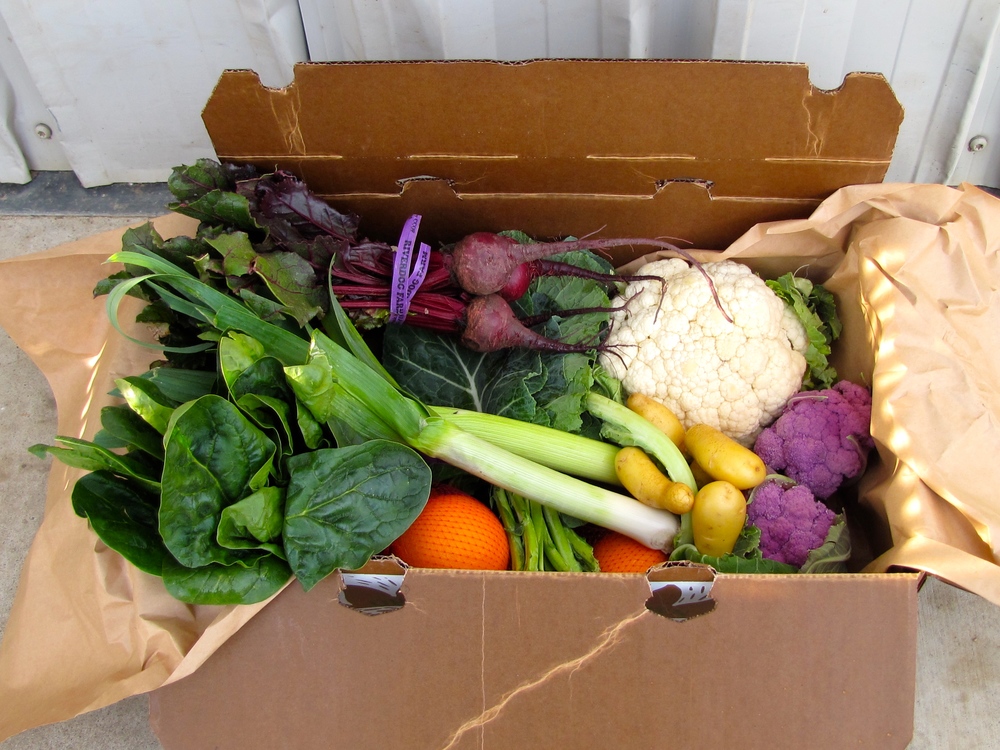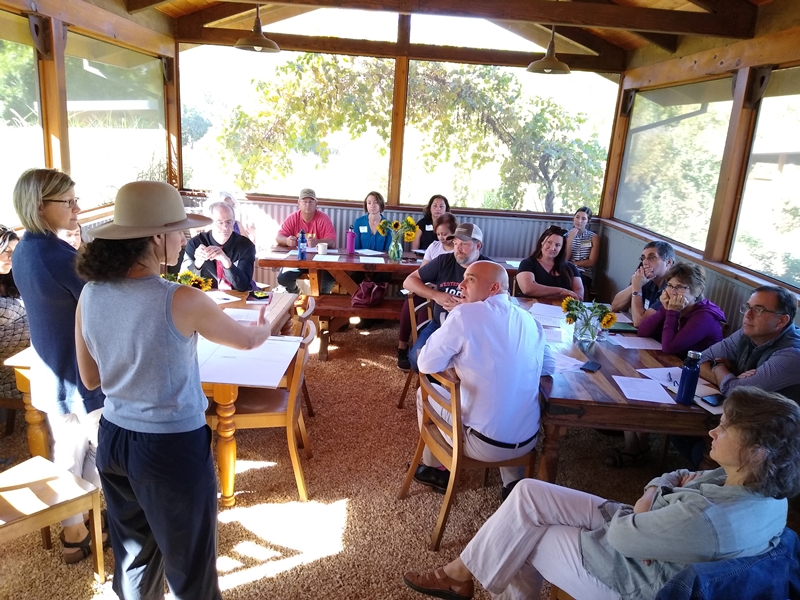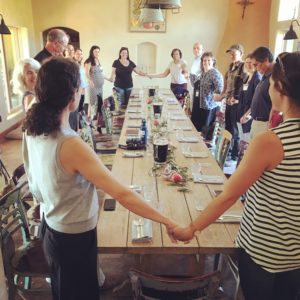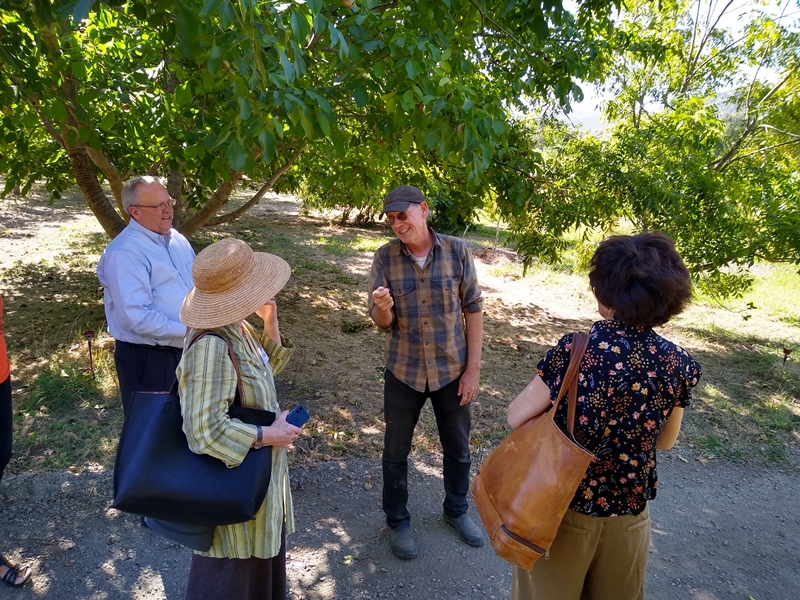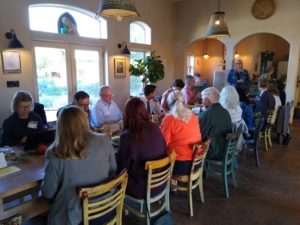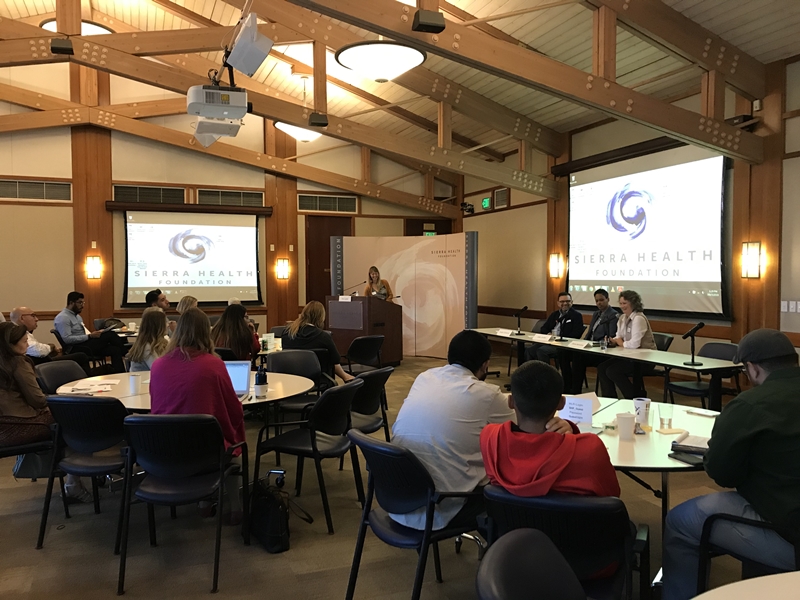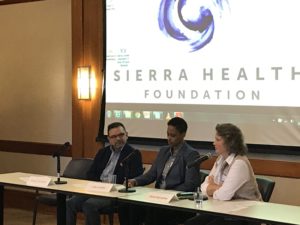CSA Farm Spotlight: Eatwell Farm
By Sustainable Solano
This is an ongoing series profiling local farms that have Community Supported Agriculture (CSAs) available in Solano County. CSAs create a way for community members to buy a share of the harvest directly from local farmers. Customers pay a set amount and receive a box of seasonal produce or other farm products in return. Such arrangements help farmers receive a greater share of the money paid, bring customers fresh, local produce and promote health, community and the local economy.
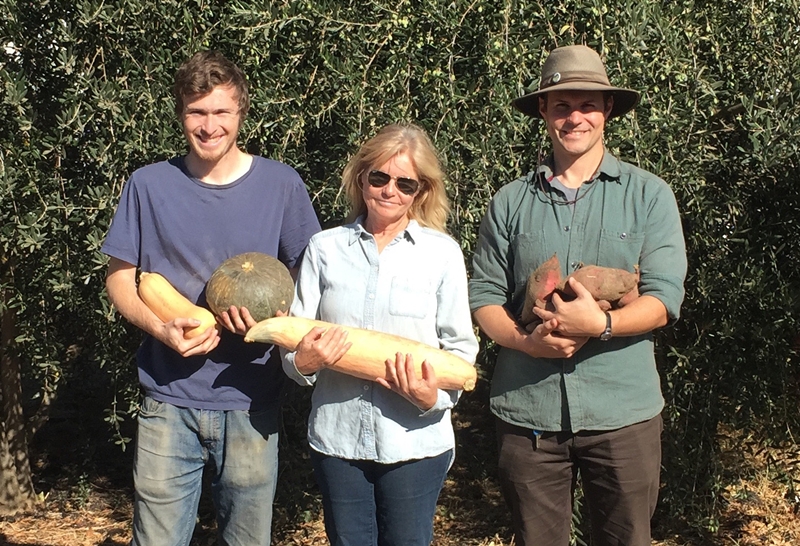
Andrew, Lorraine and Cameron of Eatwell Farm
Eatwell Farm in Dixon was started by the late Nigel Walker, a leading figure in the Bay Area organic food movement. (Here’s a talk Nigel gave on the importance of healthy soil and why it is important to the work done at Eatwell Farm.) The organic farm grows hundreds of varieties of fruits and vegetables to ensure a year-round, diverse supply of produce.
Nigel left a career as a radio engineer with the BBC World Service when he was 21 to go to horticultural college. He then farmed for a few years in England before moving to California.
He “started farming because of true calling and passion,” said Lorraine Walker, who met Nigel in 2005 while working for an aromatheraphy-based skin care company that used some of his extracts in its products. The two began dating in 2007 and married in 2011.
Nigel was diagnosed with cancer in late 2011 and died in 2017. Lorraine has continued to channel his passion and move forward their vision for the farm.
“I am not a farmer, but I have committed my life to this farm, but more importantly to our CSA community,” Lorraine said.
Below is a Q&A with Lorraine about Eatwell Farm:
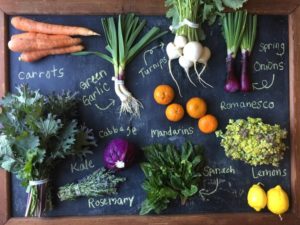
- Eatwell Farm
- Dixon
- 105 acres
- Established 1997
When did you start offering a CSA? Why was it important to offer?
Nigel chose the CSA (Community Supported Agriculture) model specifically because of the community aspect. It is what drives what we do. Putting our members first, rather than wholesale, means we commit to growing to serve their needs. When Eatwell first began over 25 years ago, our outlets were at farmers markets. We are one of the founding farms at Cuesa’s Ferry Plaza Farmers Market, and we have always been proud of our record of never having missed a market in all those years. After a couple of seasons, and meeting many great customers who were looking for a committed relationship to a farm, Nigel began the CSA with about 45 members. Today we stand at over 800 subscriptions, which means any given week we are feeding close to 2,000 people. That is a lot of lives we touch.
Are there special perks for CSA members? Why do people tend to subscribe?
I find most of our members are looking to support farms and wanting fresh produce. Some come to us with an understanding of how that direct connection can impact their lives, like learning to eat seasonally, or even better, having a farm to bring their kids to. We open the farm many times throughout the year to host members here for special events like U-pick Strawberry Days, Tomato Canning parties, and our last event was a day of harvesting olives with a pizza lunch. All of our events are private for members and their guests. Several years ago we tried opening them to the public, but we quickly learned that really altered the community/family feeling which our members had come to love, and is one of the reasons many of them stick with us.
What’s something that makes your farm stand out?
I hope what makes us special is us. My son Cameron, and now my step-son Andrew, who recently joined us as our CSA manager, make ourselves very available to all of our members. I write to all of our new members personally to say hello, give them my direct email and phone number to have in case they ever get stuck with ideas on how to use some of the produce, or just talk about the farm. I want all of our members to know that we are here, to help them out and feel like they are welcome to this special place.
Anything exciting on the horizon? What do you see happening and what do you want to see happen with interest in local food?
Learning more about farming, improving what we do, growing our community. More than ever, I think it is critical that we educate people to the importance of supporting their local farms. We are a rapidly disappearing breed, and all of us need much more than a quick pop into the farmers market and a few nice comments on the how good our produce looks. Farmers need the support of the local consumers, not just Eatwell, but all of us — Terra Firma out of Winters, Lockwood Acres in Vacaville are two super local farms who also offer CSA options.
Anything else you’d like to add?
The more we can share with folks the benefit of eating locally/seasonally, the easier it will become for them to make it their way of life. Saying no to New Zealand strawberries in February, and stone fruit from Chile in January, tomatoes year-round from Mexico to wait for them to come in locally means you get to experience them at their best. In some ways we should make many foods special again, something to look forward to, not to have 365 days of the year when most of that time what you pay for is just so inferior. Enjoying those fruits when they are at the peak of their, or rather, our season, also means we are cutting down an enormous carbon footprint with the benefit of supporting local farms and a local economy.
Eatwell Farm has Solano County CSA drop sites in Benicia, Dixon, Fairfield, Vacaville and Vallejo. Learn more about how to sign up here.
Find out more about local CSAs here.

